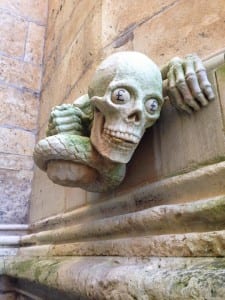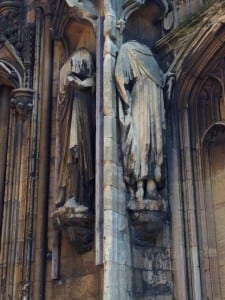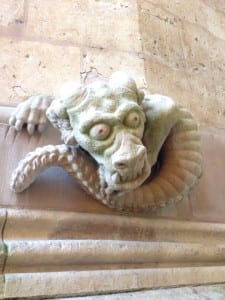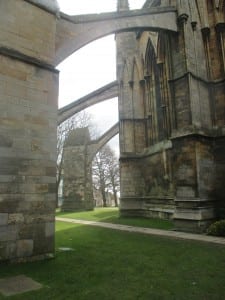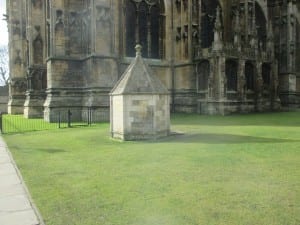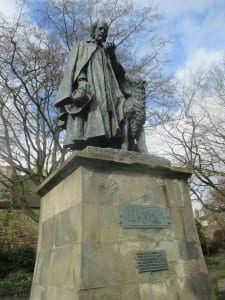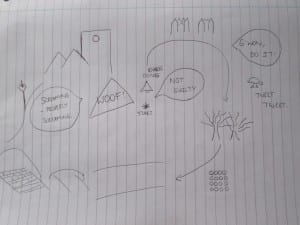After some discussion, my group and I decided to organise a walk from Pottergate to the garden in Lincoln Cathedral which involved completing some tasks on route. One such task would involve a stop at Queen Anne’s Well (https://flic.kr/p/qQ4o7N), to perform the ritual which, according to legend, entails having to walk round it 7 times and then stick a finger in one of 6 holes in the door; a good person will feel the devil’s breath on their finger whereas a bad person will have their finger bitten off. When I tried this out today, I didn’t have a finger bitten off, so I rank myself as a good person. (Paranormal Database, 2014).
We were all of the opinion that it would spice up our walk if we were to pay homage to the numerous legends and folklore associated with the area between Pottergate and the Cathedral garden and that performing this physical ritual would add more interest to it. This was only one of many ideas we had but it led us to look more closely into the history of Pottergate only to find there is very little published about it. I delved into Nickolas Pevsner and John Harris’ book The Buildings of England; Lincolnshire, to discover that Potter’s gate stretched from the south east to the north east corners of uphill Lincoln near the cathedral and that the “stairway in the SW corner, now represented by the polygonal torrent,… allowed communications between the upper chamber and the gate hall” (Nicholas Antram, 1995, 484). This photo (https://flic.kr/p/r9UG9e) shows the tunnel which was used by those inside the city walls to shout down to those waiting at the gate.
Our discussions then led us to the idea that of course it was all about communication as it was one of the entrances into the city and people would have been obliged to state their business before being allowed in. On closer inspection, there has clearly been some vandalism over the years inside the arch of Potter’s gate such as this (https://flic.kr/p/r9LZrL) which was marked 1895. There are markings dating from 1895 to 2010 which just goes to show how our desire to make our ‘mark’ in history continues to fascinate us and that ‘old habits die hard’. Beth and I collected the markings so we can read and show how diverse they are (https://flic.kr/p/rrn5up). Doing this prompted us to come up with the idea of starting our walk at Potters gate and inviting people to add their ‘mark’ to it by sticking a post it onto the archway; we linked this to the manhole covers we saw inscribed with “post office” and “telegraph” which are also another form of communication. Rather than sticking notes on to the arch’s walls, our tutor came up with the idea of having a big piece of wood which people could sign before they started their walk; we decided this was a much preferred idea that allowed people to make their ‘mark’ without causing any damage to the building.
Work Cited:
Paranormal Database (2014) Lincoln. [online] UK: Paranormal Database. Available from: http://www.paranormaldatabase.com/hotspots/lincoln.php?pageNum_paradata=0&totalRows_paradata=30 [Accessed 2 March 2015].
Antram, N. (eds) (1995)The Buildings of England. Lincolnshire. London: Penguin.

